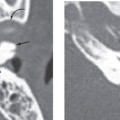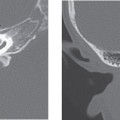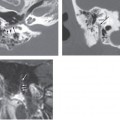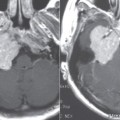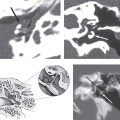CHAPTER 37 Oval Window Aplasia/Hypoplasia
Epidemiology
Congenital absence (atresia, aplasia) of the oval window is a known cause of congenital hearing loss. The prevalence of this disease has increased due to advances in computed tomography (CT) that permit routine imaging at or below 1.0-mm-thick sections. Oval window atresia is known to be associated with external auditory canal atresia. However, this potentially correctable cause of congenital hearing loss may still be missed. Patients typically present in the first decade of life with a mixed or conductive hearing loss associated with congenital hearing loss.
Embryology
The embryogenesis of oval window atresia is related to development of the second branchial arch structures and the nerve associated with second arch (facial nerve). The lenticular process of the incus, stapes suprastructure, and facial nerve are all derived from the second arch. The oval window arises from the otic capsule, but the oval window does not form unless the footplate of the stapes is fully developed. There are currently two theories that attempt to explain oval window atresia. One theory directly associates abnormal formation of the oval window to the development of the facial nerve. The tympanic and descending portions of the facial nerve become anteriorly and inferiorly displaced. This places the nerve between the stapes anlage and oval window and prevents induction of the oval window. The second theory is that the atresia is due to underdevelopment of the second branchial arch, which results in anterior shifting of second arch structures.
Stay updated, free articles. Join our Telegram channel

Full access? Get Clinical Tree


